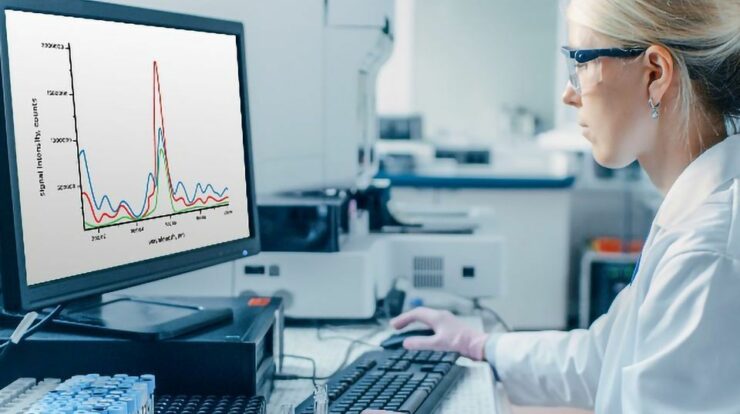
Inductively Coupled Plasma Optical Emission Spectroscopy, commonly known as ICP-OES, is a pivotal analytical technique with far-reaching implications across various industries and scientific domains. Its ability to deliver rapid and precise elemental analysis has rendered it indispensable, revolutionising countless applications.
In this blog post, we will delve deeply into the top applications of ICP OES instruments, shedding light on their critical role and impact in diverse sectors.
1. Environmental Monitoring: Safeguarding Our Ecosystem
The Role of ICP-OES
ICP-OES plays an indispensable role in environmental monitoring, a field of paramount importance given the escalating ecological challenges we face. Its precise and rapid elemental analysis capabilities empower scientists to assess and safeguard the quality of our water, soil, and air.
Significance in Environmental Compliance
ICP-OES’s remarkable ability to detect and quantify trace levels of elements makes it an essential tool in ensuring strict compliance with environmental regulations. Environmental agencies and organisations rely on ICP-OES to analyse samples for elements such as heavy metals, pesticides, and other contaminants. This meticulous analysis enables the early identification and prompt mitigation of environmental threats.
Beyond Compliance: Scientific Insights
Beyond regulatory compliance, ICP-OES offers valuable scientific insights into environmental processes and the impact of human activities on our ecosystems. Researchers employ ICP-OES to investigate long-term trends in elemental composition, assess the effectiveness of conservation efforts, and identify emerging environmental challenges.
2. Pharmaceutical Industry: Pioneering Drug Development
Ensuring Drug Safety
ICP-OES is a linchpin in drug development and quality control within the pharmaceutical sector. Pharmaceutical companies rely on these instruments to scrutinise the elemental composition of raw materials, active pharmaceutical ingredients (APIs), and finished products, thus ensuring the safety and efficacy of medications.
Detecting Impurities
ICP-OES’s meticulous analysis helps identify impurities or contaminants that could jeopardise product quality, ultimately safeguarding public health. Pharmaceutical scientists utilise ICP-OES data to optimise formulations, mitigate the risk of adverse reactions, and improve the quality of pharmaceutical products.
Accelerating Research and Innovation
ICP-OES ensures product safety and accelerates research and innovation in the pharmaceutical industry. It aids in the development of novel drug delivery systems, the exploration of new therapeutic agents, and the investigation of drug interactions within the human body. The precision and reliability of ICP-OES data are instrumental in advancing pharmaceutical science.
3. Food and Beverage Analysis: Ensuring Quality and Safety
Meeting Food Safety Standards
ICP-OES finds extensive application in the food and beverage industry, where quality and safety are paramount. This technique verifies compliance with food safety regulations and quality standards by determining the elemental composition of food products and beverages.
Nutritional Analysis
ICP-OES plays a pivotal role in ensuring that the food we consume is safe and nutritious. ICP-OES assists in maintaining the safety and nutritional value of food items by quantifying elements such as heavy metals, minerals, and nutrients. This includes monitoring the essential minerals and vitamins levels in various food products to meet dietary requirements and support overall health.
Enhancing Food Quality and Innovation
Food manufacturers and researchers leverage ICP-OES to enhance the quality of food products and drive innovation in the industry. It aids in optimising food processing techniques, reducing contaminants, and developing new, healthier food formulations. Additionally, ICP-OES is crucial for verifying label claims on nutritional content, ensuring consumer transparency.
4. Geological and Mining Applications: Unearth Hidden Treasures
Advancing Geology and Mining
Geologists and mining engineers harness the power of ICP-OES for geochemical exploration, ore analysis, and environmental impact assessments in the mining industry. The technique’s rapid analysis capabilities allow for the swift determination of trace elements within rocks, soils, and minerals.
Sustainable Mining Practices
Identifying valuable minerals and assessing their concentrations through ICP-OES facilitates mineral resource exploration and enhances the efficiency of mining processes. Simultaneously, it minimises the environmental repercussions of mining activities.
5. Metallurgical Analysis: Elevating Quality and Consistency
Enhancing Metallurgy
Metallurgy and materials science greatly benefit from ICP-OES’s capabilities. It plays a pivotal role in analysing various metals and alloys, aiding manufacturers in maintaining product quality and consistency.
Industry Applications
Whether scrutinising the composition of steel alloys, monitoring the purity of precious metals, or pinpointing impurities in metal samples, ICP-OES provides the precision and sensitivity required for metallurgical applications. This is paramount in the automotive, aerospace, and construction industries.
6. Petrochemical Industry: Fuelling Progress
Precision in Petrochemicals
In the petrochemical industry, ICP-OES is invaluable for analysing crude oil, petroleum products, and catalysts. Through precise determinations of the elemental composition of these substances, ICP-OES contributes to refining processes, quality control, and adherence to industry standards.
Sustainable Energy
Accurate measurement of elements such as sulphur, vanadium, and nickel enhances refining procedures’ optimisation while minimising environmental impact. This paves the way for sustainable energy production and reduced ecological harm.
7. Agricultural and Soil Analysis: Cultivating a Sustainable Future
Advancing Agriculture
ICP-OES is crucial in agriculture, offering insights into soil health and plant nutrition. Farmers and agricultural scientists rely on this technique to conduct soil and plant analysis, aiding in informed decision-making regarding nutrient management.
Sustainable Agriculture
By quantifying essential elements like nitrogen, phosphorus, potassium, and micronutrients in soil and plant tissues, ICP-OES optimises crop yields while simultaneously reducing the excessive use of fertilisers. This fosters sustainable and environmentally responsible agriculture, addressing global food security challenges.
8. Clinical and Biomedical Research: Advancing Healthcare
Unleashing Medical Discoveries
In the realm of healthcare and biomedical research, ICP-OES serves as a potent analytical tool. It analyses biological samples, including blood, urine, and tissues, to detect trace elements and toxic metals.
Improving Diagnostics
This invaluable information contributes to understanding disease mechanisms, assessing nutritional status, and monitoring exposure to harmful elements, facilitating breakthroughs in healthcare diagnostics and research. ICP-OES is a driving force behind precision medicine and personalised healthcare.
9. Environmental Remediation: Cleaning the Mess
Monitoring Cleanup Efforts
When contaminated sites require cleanup, ICP-OES instruments come into play to monitor the progress of environmental remediation efforts. By meticulously tracking contaminant levels in soil and water over time, environmental engineers can evaluate the effectiveness of cleanup procedures.
Restoring Ecosystems
ICP-OES ensures that remediation goals are met, paving the way for the restoration of ecological balance and rejuvenating affected areas, ultimately contributing to a healthier environment.
10. Semiconductor Industry: Empowering Technological Progress
Enabling Modern Technology
The semiconductor industry, the backbone of modern technology, relies heavily on ICP-OES to analyse ultrapure chemicals and materials used in microelectronics manufacturing.
Precision in Electronics
Trace metal impurities can profoundly impact semiconductor device performance, making accurate analysis paramount. ICP-OES is pivotal in helping semiconductor manufacturers maintain the stringent purity levels necessary for reliable semiconductor production, ultimately driving technological advancements.
Conclusion
ICP OES instruments are the unsung heroes behind scientific and industrial progress, enhancing various sectors, from environmental protection to pharmaceutical metallurgy to agriculture. As technology advances, the influence of ICP-OES instruments will likely expand, addressing increasingly complex analytical challenges across diverse fields and contributing to a safer, cleaner, and more sustainable world for us all.



